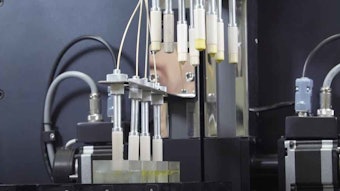
Editor's note: Paul Thau is an industry veteran with a wealth of experience in cosmetic product development. He shares the following commentary to provide the industry with insights on leveraging technology transfer and surveillance to advance cosmetics R&D.
In the last five years I was employed in the cosmetic industry (~2005 to 2010), I was the U.S. representative for an International Group involved with Technology Surveillance (T.S.) activities. In the ten years following (~2010 to 2020), as a cosmetic industry consultant, I have employed T.S. for several of my clients.
Herein, I provide a brief introduction to technology transfer, historic moment in its evolution and key useful resources for your consideration.
See related: CES 2021 Beauty Tech Highlights
Defining Technology Transfer
Technology transfer is the process universities and other research organizations use to translate research discoveries and scientific findings into new products, technologies and services that benefit the public. Also referred to as transfer of technology (TOT), it can further be described as the process of transferring (disseminating) technology from the person or organization that owns or holds it, to another person or organization.
Often times, this transferral occurs by a concerted effort to share skills, knowledge, technologies, manufacturing methods, samples and facilities among the participants. It also ensures that scientific and technological developments are accessible to a wider range of users who can then further develop and exploit the technology into new products, processes, applications, materials or services.
Bayh-Dole Act of 1980
The Bayh-Dole Act, or Patent and Trademark Law Amendments Act, is a piece of U.S. legislation that deals with inventions arising from federal government-funded research. Sponsored by two senators, Birch Bayh of Indiana and Bob Dole of Kansas, the Act was adopted in 1980.
This legislation was significant because it enabled universities to patent technologies even if the U.S government had contributed funds for some of the research. This change stimulated many universities to establish technology transfer groups. It also enabled small businesses to own patents that arose from federal sponsorships.
Wisconsin Alumni Research Foundation (WARF)
Since its founding in 1925, prior to the Bayh-Dole Act, WARF has helped steward the cycle of research, discovery, commercialization and investment for the University of Wisconsin at Madison. Through its patents and licensing efforts, WARF enables university innovations to advance into industry. Notable discoveries through WARF include the irradiation of milk and the development of warfarin, from which the blood thinner Coumadin was developed.
Technology transfer provides access to areas of technology beyond the company’s expertise.
AUTM
Formerly the Association of University Technology Managers, but now simply "AUTM," this group was founded in 1970 and is the non-profit leader in efforts to educate, promote and inspire professionals to support the development of academic research that changes the world and drives innovation forward. The community is comprised of more than 3,000 members who work in more than 800 universities, research centers, hospitals, businesses and government organizations around the globe.
See related: 1HQ Proposes Digital Lipstick for Smart Personalization
Technology transfer is about evaluating, protecting and transferring intellectual property from the lab to the marketplace; corporate engagement; start-up and entrepreneurial support; and economic development. I was a member if this organization from 1994 to 1998 as a representative from Cosmair/L’Oréal USA, and when I attended AUTM meetings, I learned about early stage research projects at numerous universities. One example, which was novel at the time, was a UCLA process for creating stable nanoscale double emulsions, with both inner and outer droplet diameters below 100 nm. These droplets could carry biologically active co-polypeptide moieties.
Licensing Executive Society
The Licensing Executives Society International (LESI) is another organization, consisting of 33 national and regional member societies of men and women interested in technology transfer or licensing intellectual property rights. These range from technical know-how and patented inventions, to software, copyright and more.
Nine Sigma
Nine Sigma enables users to source innovative ideas, technologies, products and services from outside organizations quickly and inexpensively by connecting them to top innovators from around the world. Its unique "Discover-Connect-Solve" approach is based upon the principles of open innovation. Users gain access to the largest and most comprehensive open network of scientific researchers in the world to solve scientific and business needs.
Benefits of Technology Transfer
Technology transfer affords various product development benefits:
1. It offers the potential to leverage internal R&D programs with external R&D programs.
2. It moves projects more rapidly into development through partnerships.
3. Joint technology development yields results that neither group can achieve alone.
4. It provides access to areas of technology beyond the company’s expertise.
Conclusion
In conclusion, the selective and discriminating use of technology surveillance and transfer by trained R&D staff members can serve to expand resources and enhance innovation in new product development.
Useful Websites
www.sciencedaily.com
www.autm.net
www.uspto.gov
www.lesi.org
www.ninesigma.com










